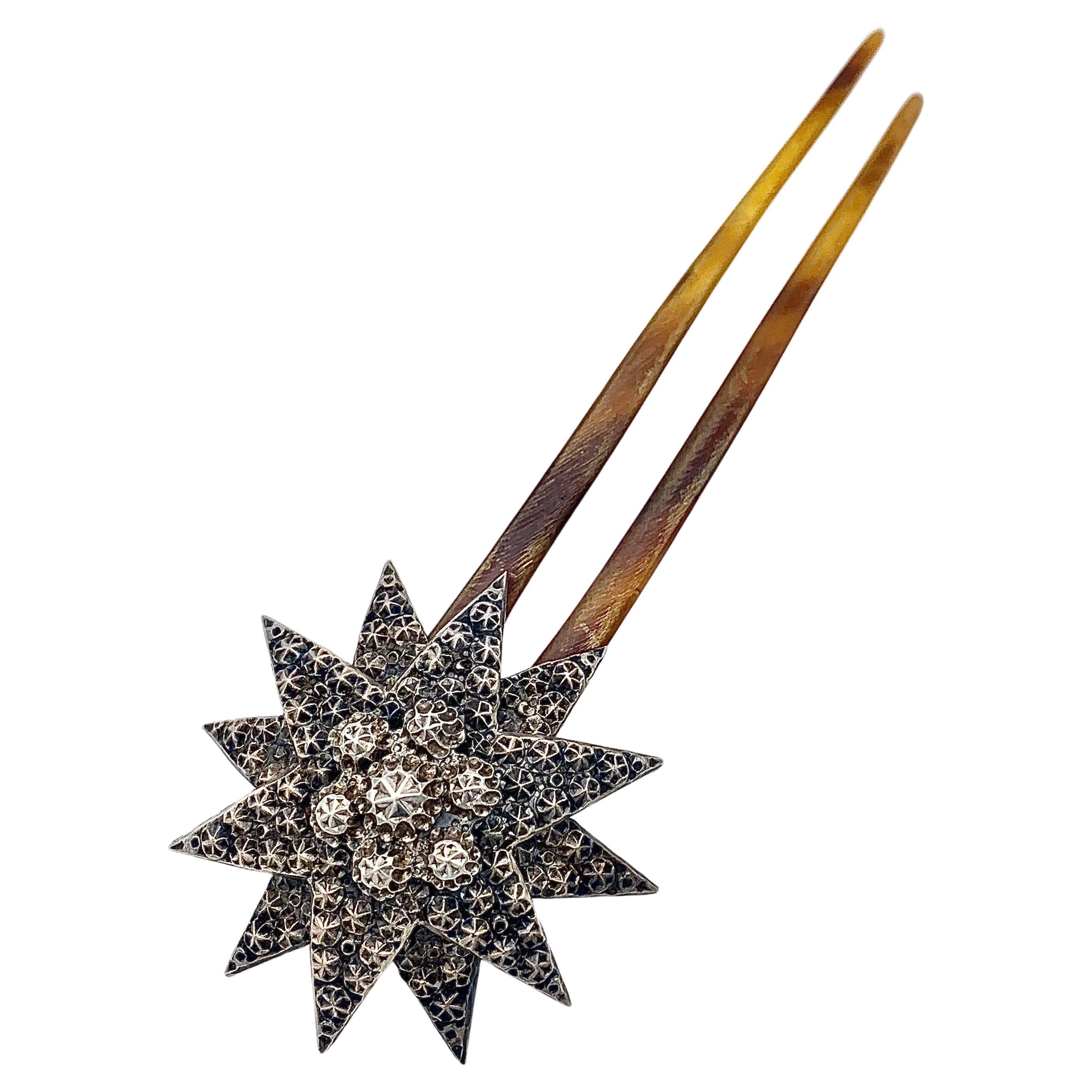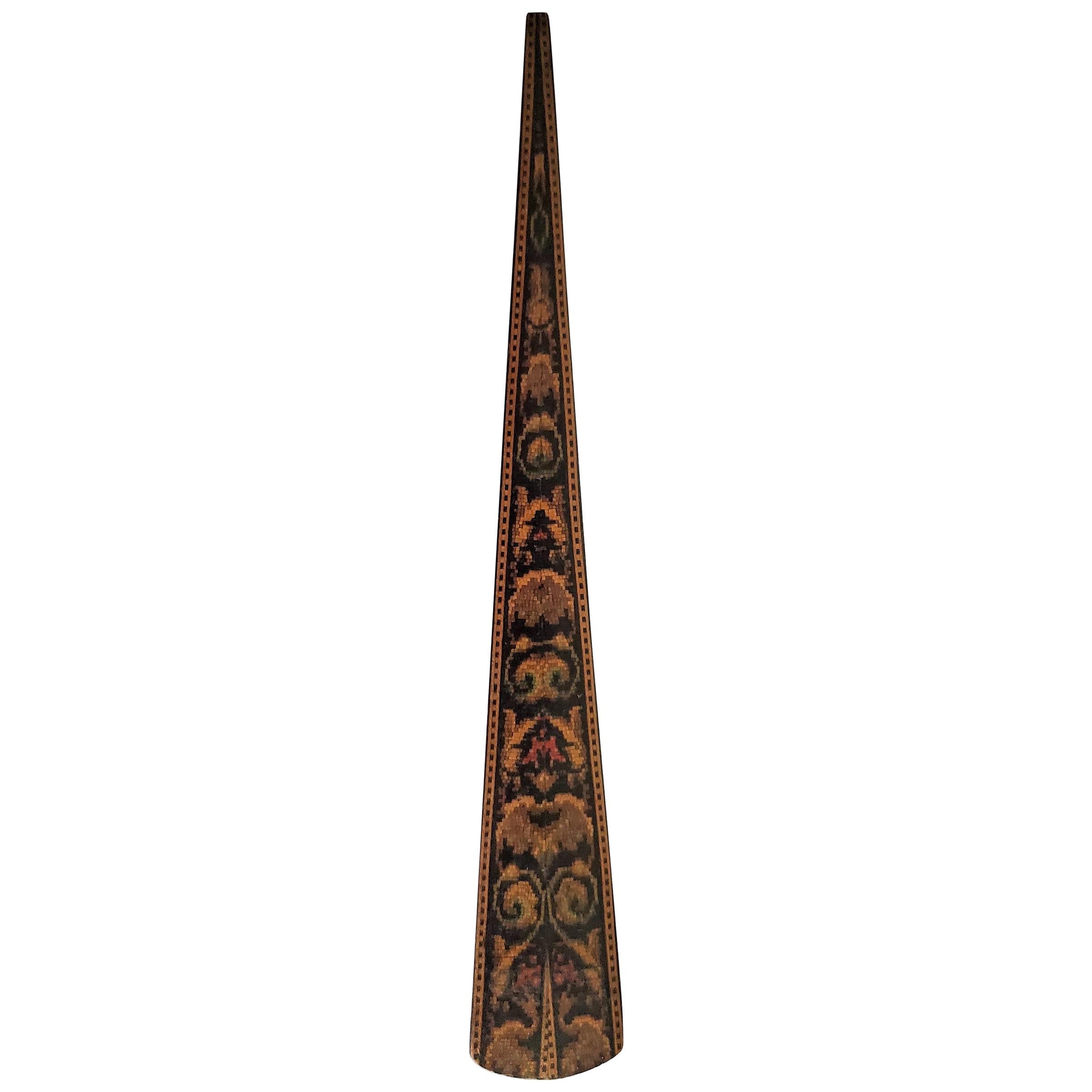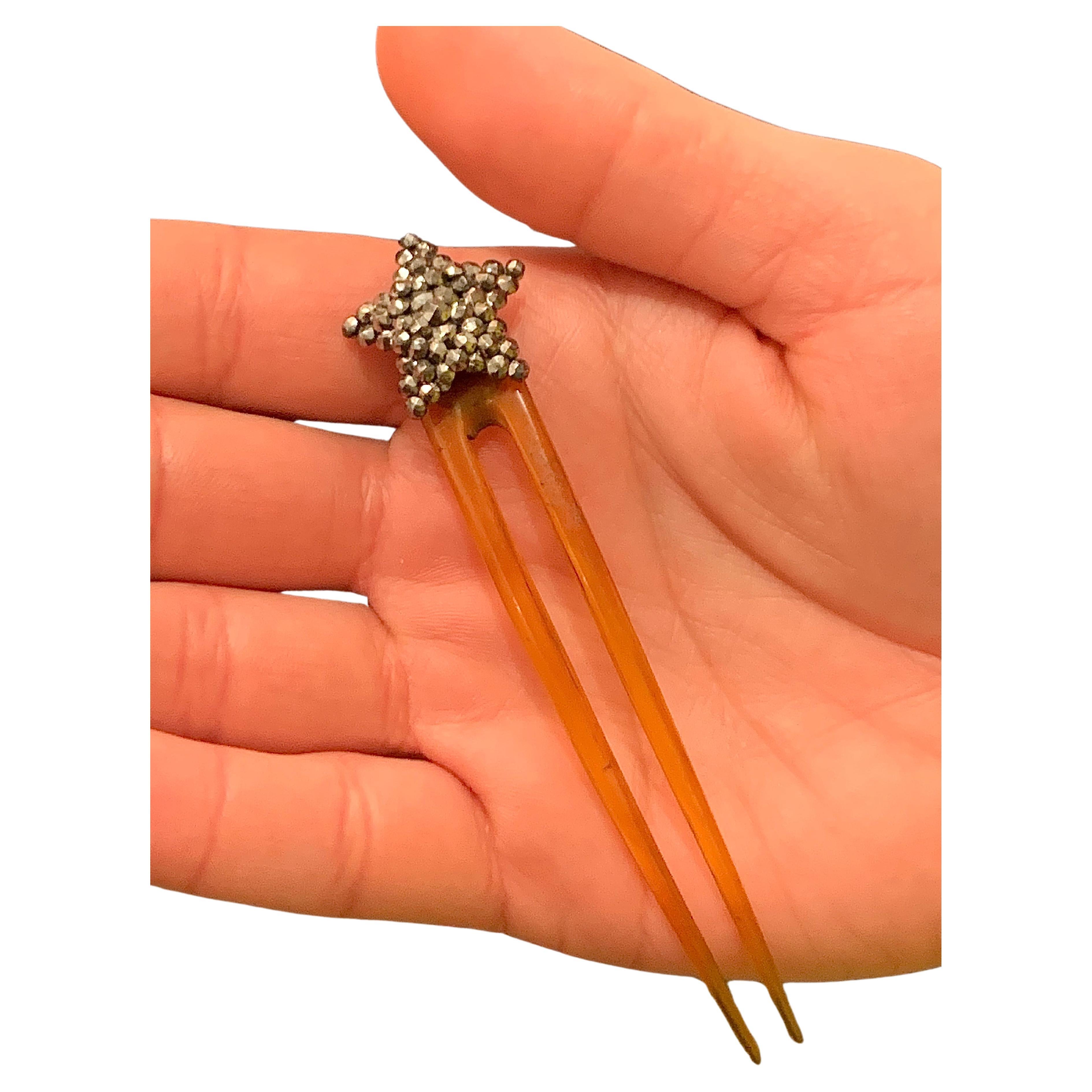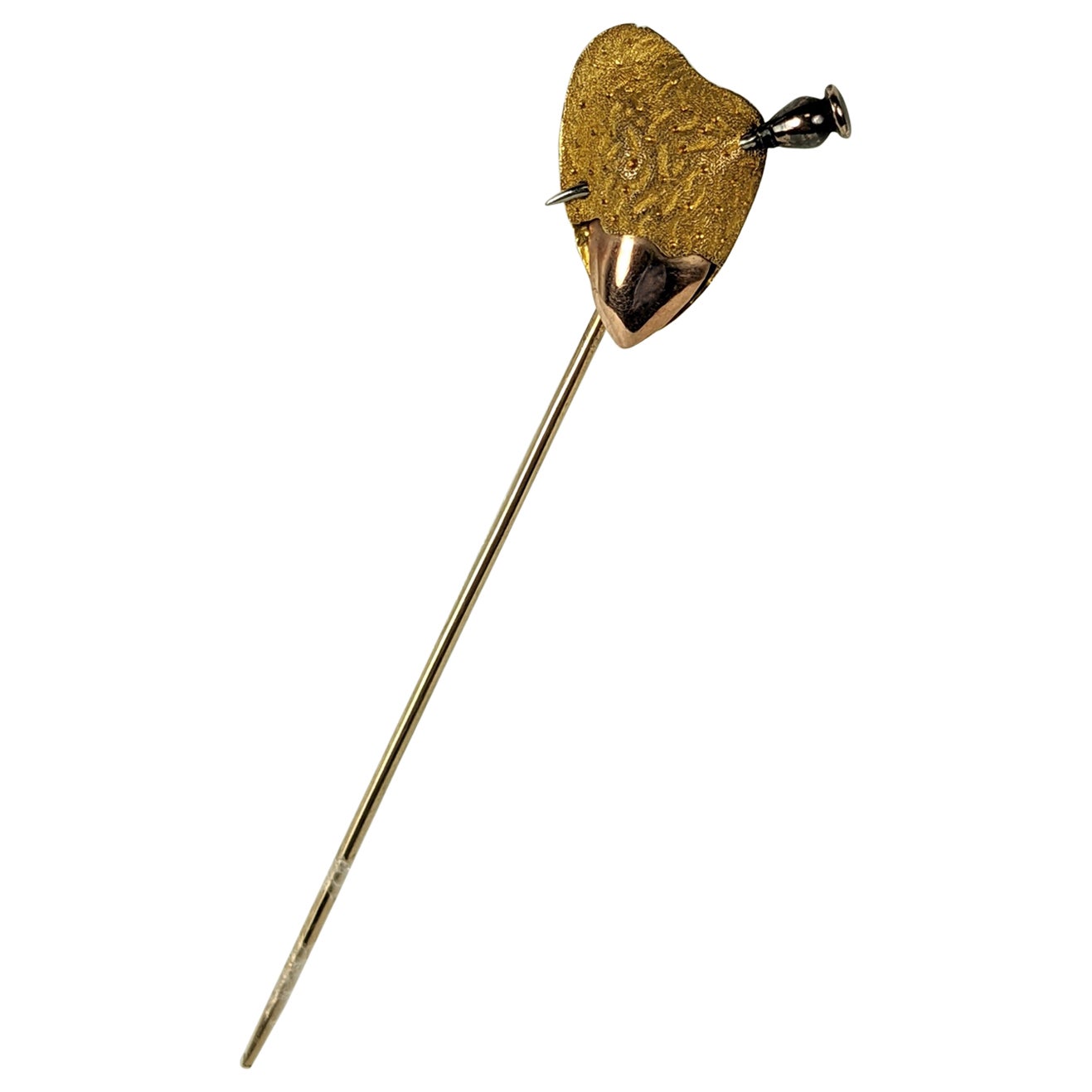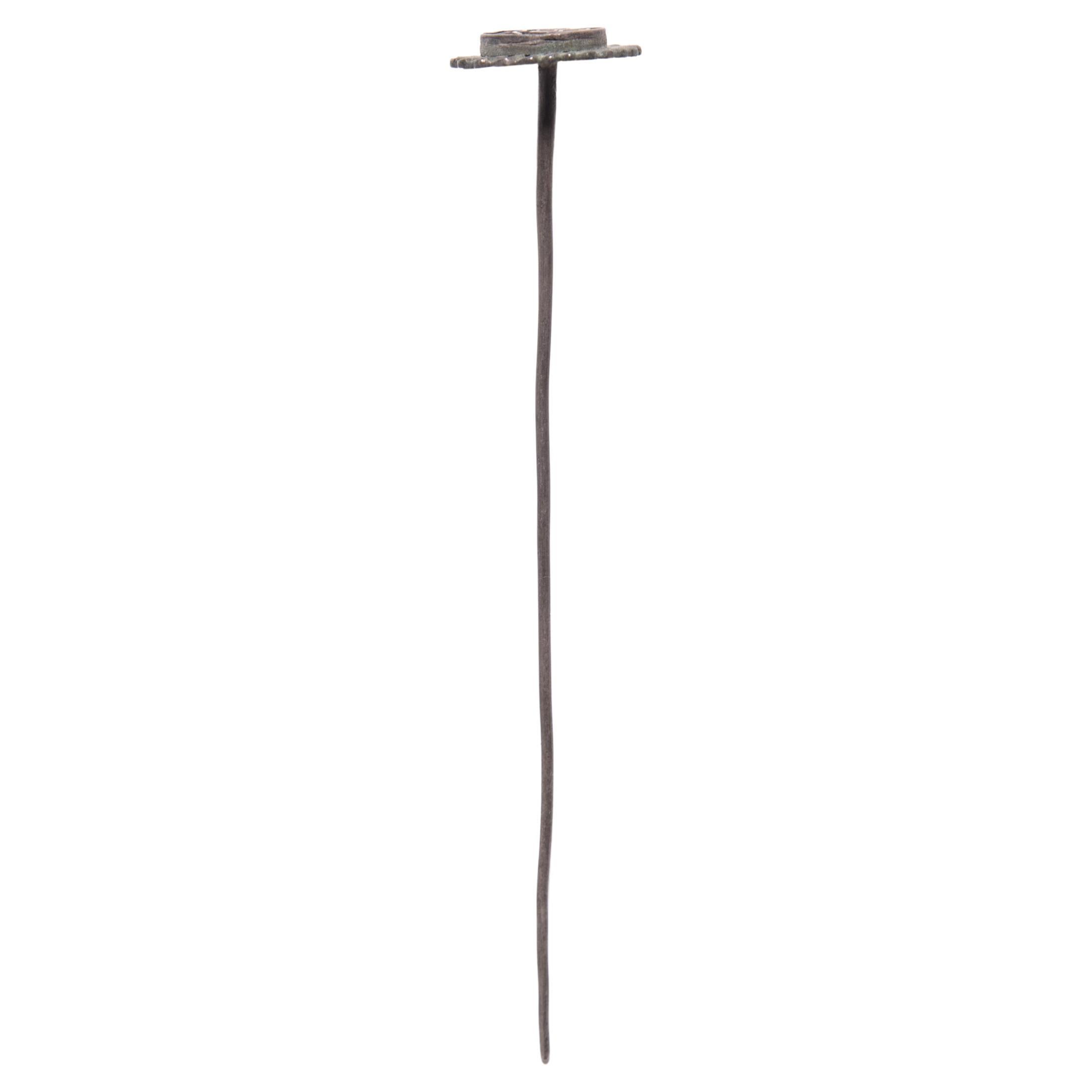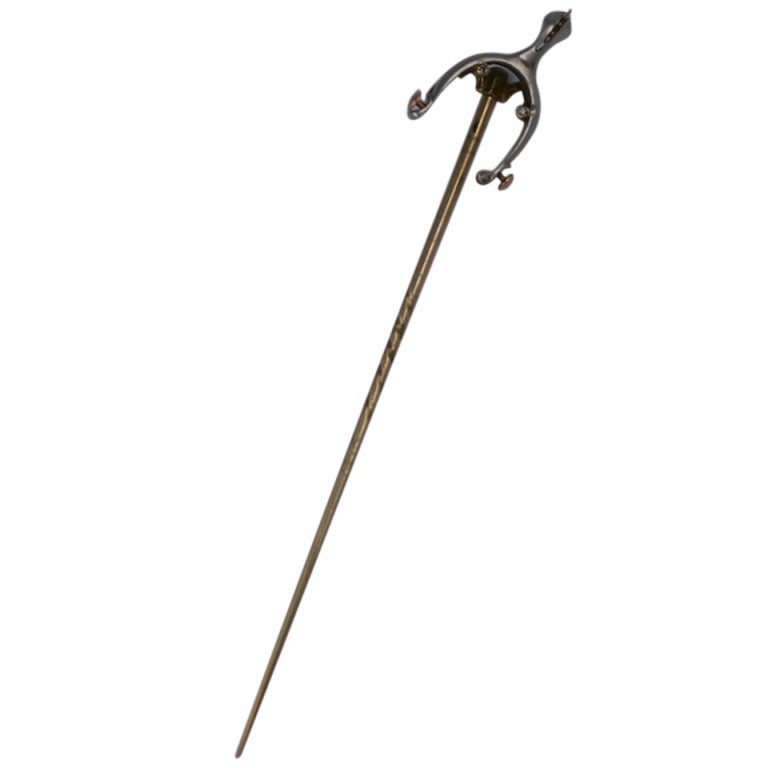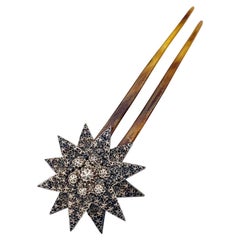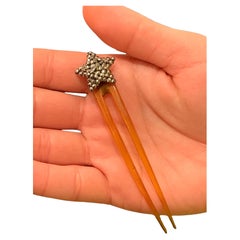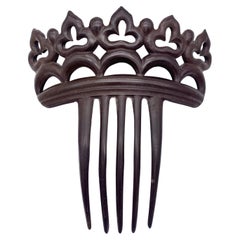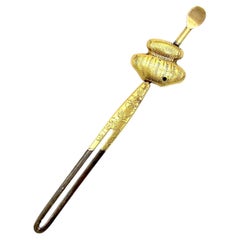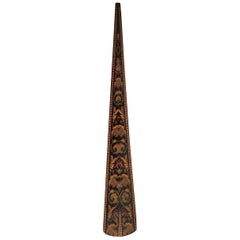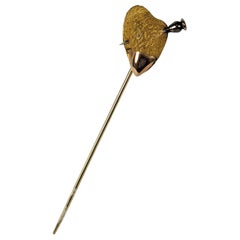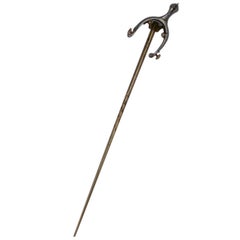Items Similar to Victorian 1880 Star Hair Pin Vulcanite Gutta Percha
Want more images or videos?
Request additional images or videos from the seller
1 of 5
Victorian 1880 Star Hair Pin Vulcanite Gutta Percha
$283.55
£212.54
€240
CA$389.55
A$434.89
CHF 227.88
MX$5,323.52
NOK 2,894.05
SEK 2,728.72
DKK 1,826.97
Shipping
Retrieving quote...The 1stDibs Promise:
Authenticity Guarantee,
Money-Back Guarantee,
24-Hour Cancellation
About the Item
A vulcanite star is mounted onto a hair pin in made from the same material.
Vulcanite, also called gutta percha was made from rubber.
About the Seller
5.0
Gold Seller
Premium sellers maintaining a 4.3+ rating and 24-hour response times
1stDibs seller since 2019
186 sales on 1stDibs
Typical response time: 5 hours
- ShippingRetrieving quote...Shipping from: Munich, Germany
- Return Policy
Authenticity Guarantee
In the unlikely event there’s an issue with an item’s authenticity, contact us within 1 year for a full refund. DetailsMoney-Back Guarantee
If your item is not as described, is damaged in transit, or does not arrive, contact us within 7 days for a full refund. Details24-Hour Cancellation
You have a 24-hour grace period in which to reconsider your purchase, with no questions asked.Vetted Professional Sellers
Our world-class sellers must adhere to strict standards for service and quality, maintaining the integrity of our listings.Price-Match Guarantee
If you find that a seller listed the same item for a lower price elsewhere, we’ll match it.Trusted Global Delivery
Our best-in-class carrier network provides specialized shipping options worldwide, including custom delivery.More From This Seller
View AllAntique Victorian 1880 Hairpin Hair Ornament Star Silver Brass Horn
Located in Munich, Bavaria
This elegant and festive hairpin in the shape of a star was created in 1880 ca. Star ornaments for hair and clothes were all the rage in the 1880's. The star is made out of two silve...
Category
Antique 1880s European Victorian Vanity Items
Materials
Silver
Antique Hair Pin Star Cut Steel Horn Hair Ornament
Located in Munich, Bavaria
This charming little cut steel hair pin has been hand crafted in the second quarter of the 19th century. It is made from facetted steel nails riveted ont...
Category
Antique 1830s English Vanity Items
Materials
Cut Steel
Antique Hair Comb Hair Ornament Vulcanite Gutta Percha Gothic Revival
Located in Munich, Bavaria
This stylish hair comb is designed in the Gothic Revival taste and is crafted out of vulcanite, a composite made out of rubber patented by Goodyear in 1864.
Category
Antique 1870s British Gothic Revival More Jewelry
Antique 19th Century Japanese Hair Ornament Hairpin Gilt Metal Cast Metal
Located in Munich, Bavaria
This charming hair ornament was created out of cast metall in the last quarter of the nineteenth century. The visible part of the hair ornament is designed as an elaborate Japanese c...
Category
Antique 1880s Japanese Vanity Items
Materials
Gilt Metal
Antique Hairpin Hair Ornament Four Leaf Clover Good Luck Silver Celluloid
Located in Munich, Bavaria
This charming hair ornament has been crafted out of embossed silver in the 1880s. The articulated four leaf clover is riveted onto a hairpin made out of celluloid.
Category
Antique 1880s European Victorian Vanity Items
Materials
Silver
Antique Chinese Hairpin Flowers Butterfly Silver Brass Metal Wire Glass
Located in Munich, Bavaria
This most amazing hair pin was handcrafted in China in the last quarter of the nineteenth century. It is designed as a bouquet of flowers with a butterfly.
Category
Antique Late 19th Century Vanity Items
Materials
Brass, Silver
You May Also Like
Rare 19th Century English Tunbridgeware Hair Pin or Slide
Located in Dallas, TX
PRESENTING an EXTREMELY UNIQUE and RARE 19C British Tunbridgeware Hair Pin/Bobbin or Slide.
This slide is unlike any of it’s kind we have seen before, it is a VERY RARE survivor.
From circa 1860 – 80 and made in Tunbridge Wells, England.
Made of walnut with gorgeous marquetry inlay on the entirety of the front with classic Tunbridgeware micro-mosaic all over the front. The rear is walnut.
The marquetry inlay appears to be various different woods, namely, maple, walnut and satinwood.
Would have been worn in a Lady’s hair bun with the micro-mosaic facing forward.
This would have belonged to a VERY ELEGANT LADY in the mid to late 19th Century.
Tunbridge ware is a form of decoratively inlaid woodwork, typically in the form of boxes, that is characteristic of Tonbridge and the spa town of Royal Tunbridge Wells in Kent in the 18th and 19th centuries. The decoration typically consists of a mosaic of many very small pieces of different coloured woods that form a pictorial vignette. Shaped rods and slivers of wood were first carefully glued together, then cut into many thin slices of identical pictorial veneer with a fine saw. Elaborately striped and feathered bandings for framing were pre-formed in a similar fashion.
There is a collection of Tunbridge ware in the Tunbridge Wells Museum and Art Gallery in Tunbridge Wells.
The famous makers of Tunbridge ware were in the Tunbridge Wells area of Kent; their most notable work was from circa 1830-1900.
Early makers of Tunbridge ware, in Tunbridge Wells in the mid-18th century, were the Burrows family, and Fenner and Co. In the 19th century, around 1830, James Burrows invented a technique of creating mosaics from wooden tesserae. Henry Hollamby, apprenticed to the Burrows family, set up on his own in 1842 and became an important manufacturer of Tunbridge ware, employing about 40 people.
Edmund Nye (1797–1863) and his father took over the Fenner company when William Fenner retired in 1840, after 30 years in partnership with him. Thomas Barton (1819–1903), previously apprenticed at the Wise factory, joined the Nyes in 1836, and worked as Nye’s designer; he took over the business in 1863 and continued there until his death.
In Tonbridge (near to Tunbridge Wells), George Wise (1703–1779) is known to have had a business in 1746. It continued with his son Thomas, and Thomas’s nephew George (1779–1869), who took over in 1806. In its early years the company made articles such as workboxes and tea caddies with prints of popular views; later items had pictures created from mosaics. Their workshop in Tonbridge, Wise’s Tunbridge Ware Manufactory, was next to the Big Bridge over the Medway; the building was demolished in 1886 to widen the approach to the bridge.
Tunbridge ware became popular with visitors to the spa town of Tunbridge Wells, who bought them as souvenirs and gifts. Articles included cribbage boards, paperweights, writing slopes, snuffboxes and glove boxes.
At the Great Exhibition of 1851, Tunbridge ware by Edmund Nye, Robert Russell and Henry Hollamby was shown; Edmund Nye received a commendation from the judges for his work. He exhibited a table depicting a mosaic of a ship at sea; 110,800 tesserae were used in making the picture.
The manufacturers of Tunbridge ware were cottage industries, and they were no more than nine in Tunbridge Wells and one in Tonbridge. The number declined in the 1880s; competent craftsmen were hard to find, and public tastes changed. After the death of Thomas Barton in 1903 the only surviving firm was Boyce, Brown and Kemp, which closed in 1927.
Marquetry was an old technique which was continued by Nye and Barton to create images such as birds or butterflies.
‘Green Oak’ as caused by the fungus Chlorociboria aeruginascens.
Stickware and half-square mosaic was invented by James Burrows in about 1830: a bunch of wooden sticks of different colours, each having triangular or diamond-shaped cross section, were tightly glued together; in the case of stickware, the resulting block was dried, then turned to form an article such as the base of a pincushion. For half-square mosaic, thin slices were taken from the composite block, and applied to a surface.
Tesselated mosaic, was a development by James Burrows of half-square mosaic; it was adopted by George Wise and Edmund Nye. Minute tesserae were used to form a wide variety of geometric and pictorial designs.
Many sorts of wood were used for the various colours; about 40 were in regular use. Only natural colors were used; green was provided by “green oak”, produced by the action of fungus on fallen oak. Designs for articles were often taken from designs of Berlin wool work.
Category
Antique Late 19th Century English High Victorian Collectible Jewelry
Materials
Satinwood, Walnut
Unusual Victorian Pecan Stickpin
Located in Riverdale, NY
Unusual Victorian Pecan Stickpin in 14k gold from the 19th Century. Hand crafted of textured yellow gold, pink gold with a white and pink gold spike....
Category
Antique 1860s American High Victorian Brooches
Materials
14k Gold
Chinese Good Fortune Hairpin, c. 1900
Located in Chicago, IL
Although eyes were certainly drawn to the high, fan-shaped headdresses that Qing-dynasty women affixed to back of their heads, it was the finishing touch of a hairpin or two that completed the look. This silver hairpin ends in a round floral medallion framing the decorative Fu (?) character for "good...
Category
Antique Mid-19th Century Chinese Qing Collectible Jewelry
Materials
Silver
Victorian Spur Motif Stickpin with Diamonds
Located in New York, NY
A platinum "Spur" with mechanical gold accents and 3 rose diamonds sits atop a thick 14k gold stickpin. Heavy gauge quality stickpin for a gentleman of means from the period.
Charming western motif is highly unusual but beautifully rendered in precious metals and stones. Probably a special commission in the late 19th Century...perfect for a 21 Century urban cowboy...
Category
Antique Late 19th Century American Victorian Brooches
Materials
Diamond, 14k Gold, Platinum
Circa 1900s 14K Yellow Gold and Pearl Starburst Stick Pin
Located in Hicksville, NY
Item Details:
Metal Type: 14K Yellow Gold [Hallmarked, and Tested]
Weight: 1 grams
Pin Measurements:
Length: 2 inches
Condition: Excellent
Category
Early 20th Century Brooches
Materials
Gold, 14k Gold, Yellow Gold
Late Victorian 10 Karat Gold & Seed Pearl Stick Pin
Located in Philadelphia, PA
A very fine Late Victorian 10k gold & seed pearl stick pin.
With a lotus shaped flower that has a small white round seed pearl set at its center.
Si...
Category
Antique 19th Century Late Victorian Brooches
Materials
Pearl, Gold
More Ways To Browse
Hair Jewellery
Victorian Hair
Victorian Hair Jewelry
Antique Vulcanite Jewelry
Cartier Gold Money Clip
Cartier Money Clip
Edwardian Hair Comb
Georg Jensen Belt Buckle
Horn Hair Comb
Sterling Barrette
Tiffany Tie Bar
Cartier Tie Clip
Chaumet Book
Hermes Tie Clip
Nixon Watch
Tiara Coral
Turquoise Tiara
Victorian Fob Gold Quartz
